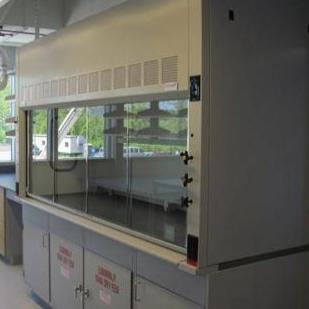An exhaust duct is a pipe for conducting exhaust away from a work area or the inside of a building. Exhaust can create a fire hazard if it is not adequately vented and may also pose risks to human health, as it can carry fumes and particulates that would be dangerous to inhale. Exhaust ducts are important safety features, and they are usually required under the building code. Many hardware and home supply stores carry exhaust ducts and parts, and they are typically very easy to install.
The exhaust duct is designed to connect either to a fume hood or exhaust outlet. Fume hoods trap fumes rising from a work area like a table where people are working with glue and varnishes, and often include a fan to pull fumes up and away, preventing them from leaving them into the room. Exhaust outlets are mounted on the back of devices like clothes dryers. The pipework runs from the hood or outlet through a wall to the outside, where another hood prevents water from entering the piping and provides a neat and clean appearance.

Ideally, the pipe for an exhaust duct should run straight, to limit interference with the free flow of air through the ductwork. If it does need to bend, the bends should be gentle, rather than sharp, and the piping should be laid out to minimize the number of bends required. Some exhaust ducts are made with flexible piping, allowing people to do things like pulling a dryer out from the wall for cleaning and servicing without disconnecting the ductwork. Others are rigid.

Metals are usually preferred for the piping used in an exhaust duct. Metal is less likely to catch fire, and when it is surrounded by insulation, it will be a poor conductor of heat, limiting the chances of heat transfer to the surrounding structure. This reduces fire hazards caused by situations like melting the insulation on electrical wiring and causing a short. If plastic is used, it should be rated for the intended application. It is also important to install the exterior hood flush with the wall so water cannot flow behind it and damage siding or trickle into the walls.
Placement of an exhaust duct requires finding a space between joists, if the duct is small, or working with a contractor to cut a hole while providing adequate support to the surrounding joists. People should not cut through joists without preparing ahead of time by adding other structural supports, as this may disrupt the structural integrity of the building.
Ever since she began contributing to the site several years ago, Mary has embraced the exciting challenge of being a About Mechanics researcher and writer. Mary has a liberal arts degree from Goddard College and spends her free time reading, cooking, and exploring the great outdoors.

